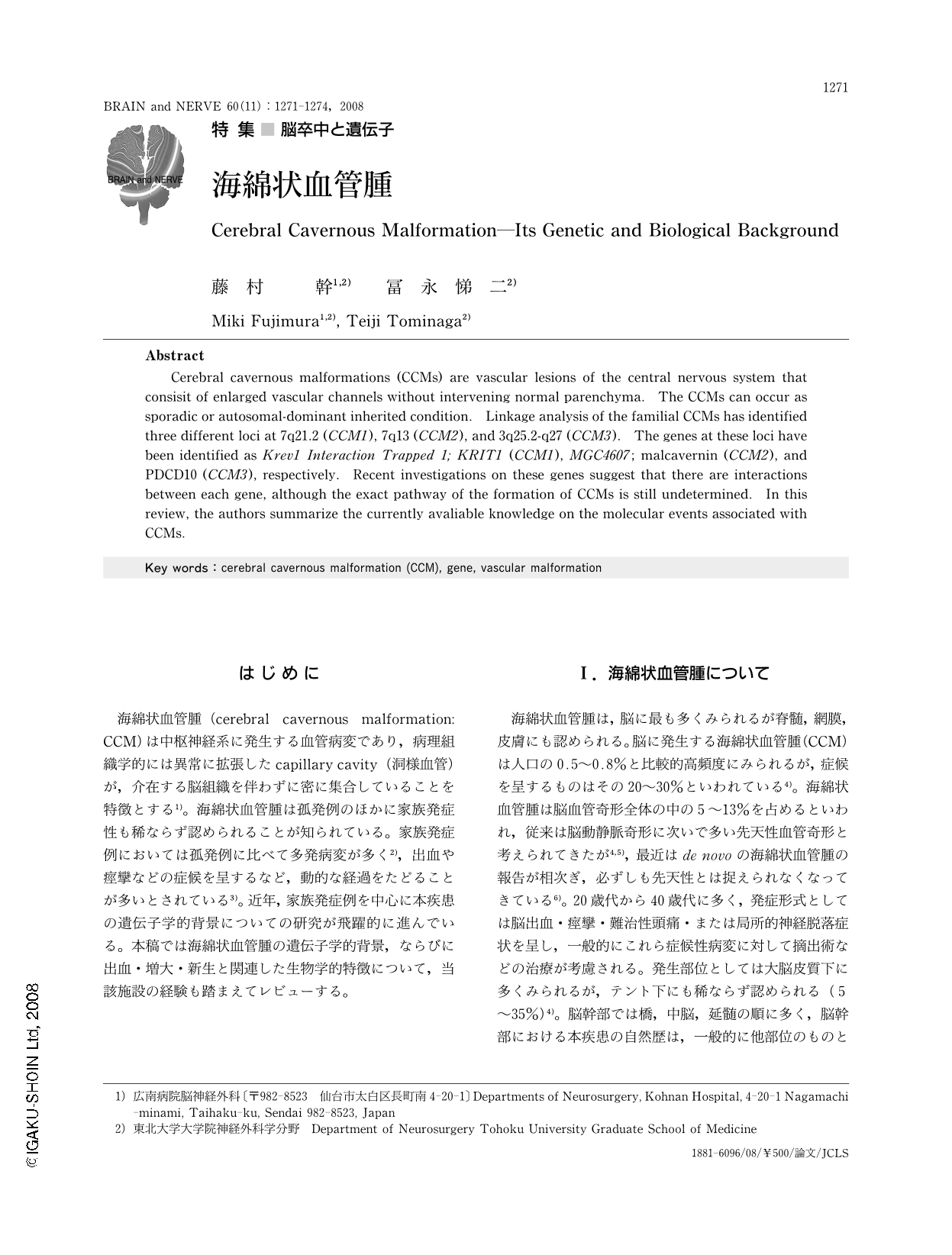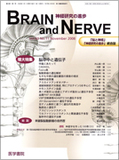Japanese
English
- 有料閲覧
- Abstract 文献概要
- 1ページ目 Look Inside
- 参考文献 Reference
はじめに
海綿状血管腫(cerebral cavernous malformation: CCM)は中枢神経系に発生する血管病変であり,病理組織学的には異常に拡張したcapillary cavity(洞様血管)が,介在する脳組織を伴わずに密に集合していることを特徴とする1)。海綿状血管腫は孤発例のほかに家族発症性も稀ならず認められることが知られている。家族発症例においては孤発例に比べて多発病変が多く2),出血や痙攣などの症候を呈するなど,動的な経過をたどることが多いとされている3)。近年,家族発症例を中心に本疾患の遺伝子学的背景についての研究が飛躍的に進んでいる。本稿では海綿状血管腫の遺伝子学的背景,ならびに出血・増大・新生と関連した生物学的特徴について,当該施設の経験も踏まえてレビューする。
Abstract
Cerebral cavernous malformations (CCMs) are vascular lesions of the central nervous system that consisit of enlarged vascular channels without intervening normal parenchyma. The CCMs can occur as sporadic or autosomal-dominant inherited condition. Linkage analysis of the familial CCMs has identified three different loci at 7q21.2 (CCM1),7q13 (CCM2),and 3q25.2-q27 (CCM3). The genes at these loci have been identified as Krev1 Interaction Trapped 1; KRIT1 (CCM1),MGC4607; malcavernin (CCM2),and PDCD10 (CCM3),respectively. Recent investigations on these genes suggest that there are interactions between each gene,although the exact pathway of the formation of CCMs is still undetermined. In this review,the authors summarize the currently avaliable knowledge on the molecular events associated with CCMs.

Copyright © 2008, Igaku-Shoin Ltd. All rights reserved.


